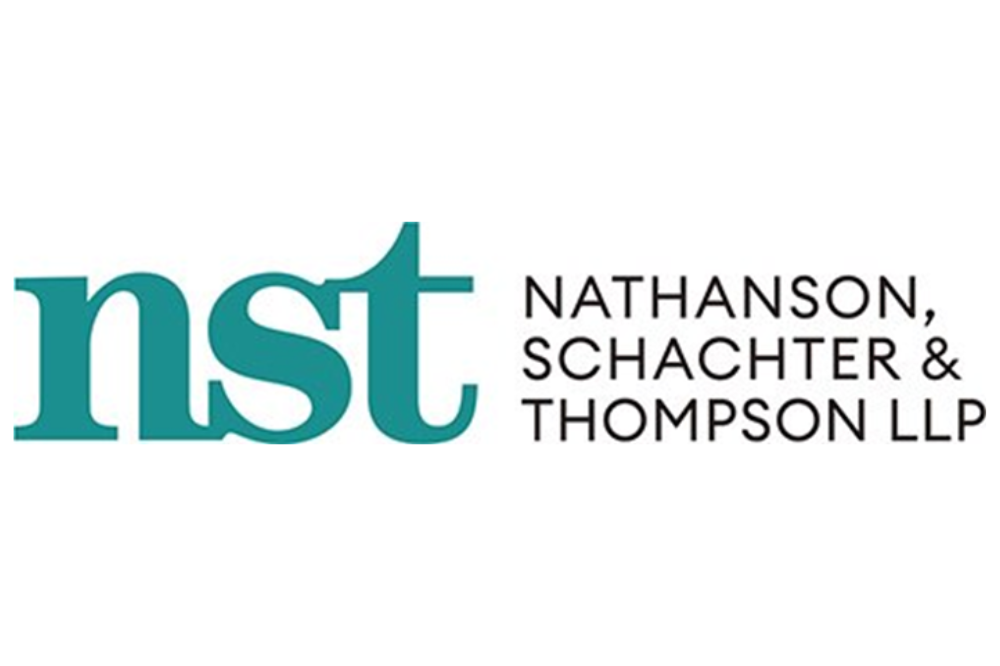In tort litigation, the court tries to put the injured party in the position it would have been in had the tort not been committed. The court shouldn’t leave plaintiffs better off than when they first began. But, according to James Parker and Allison McMahon, associates at Nathanson, Schachter & Thompson, a recent decision got that wrong.
In Luminary Holding Corp. v. Fyfe, 2021 BCSC 167 (“Luminary”), the court awarded damages for lost profits and costs incurred in pursuit of those profits. The trial judge determined that these costs were “thrown away” because of the defendants’ negligence despite implicitly finding that the plaintiffs would still have incurred them if the tort had not been committed. In reasons indexed as 2022 BCCA 185, the Court of Appeal affirmed this aspect of the judge’s reasoning and rejected the defendants’ argument that the award amounted to double recovery.
The law is clear that damages for lost profits are assessed net of expenses (i.e., projected revenue less expenses).[1] Where a plaintiff has incurred out-of-pocket expenses in pursuit of those profits, they may elect to recover damages for their wasted expenses instead of lost profits. However, they may not recover both.[2] This reflects the fact that absent the tortious conduct, the plaintiff would still have incurred those expenses to earn the claimed profits. Consequently, awarding both lost profits and wasted expenses places the plaintiff in a better position than they would have been in absent the tort.
The analysis in Luminary muddies these principles. To avoid confusion in future cases, courts should be guided by the purpose of tort damages. By carefully comparing the injured party’s actual position against the position they would have occupied had the tortious conduct not occurred, and awarding the difference between these figures, courts can ensure that profits and expenses are appropriately accounted for.
Factual background
The plaintiffs purchased a property in Fernie, British Columbia (the “Property”), part of which was in the Agricultural Land Reserve (“ALR”). The plaintiffs planned to build a single building on the Property that would house an executive retreat centre and two residences (“Plan A”).
Before the sale closed, the listing agent learned of the plaintiffs’ plans for the Property. The agent was also aware that the Agricultural Land Commission (“ALC”) had proposed to add the remainder of the property to the ALR as part of an ongoing boundary review process (“Boundary Review”), and that the registered owner of the Property could avoid the proposed inclusion by simply advising the ALC that it wished to opt-out (the “Option”). However, the agent did not disclose these facts to the plaintiffs. As a result, the Option was not exercised, and the Property was added to the ALR shortly after the sale closed.
The plaintiffs began to develop the Property following Plan A. However, they were unable to obtain the permits necessary to complete the plan due to restrictions on land use in the ALR. Consequently, the plaintiffs decided to divide the project into two smaller buildings (“Plan B”). The projected profits for Plan B were lower than those for Plan A. Shifting to Plan B also increased the plaintiffs’ costs and delayed completion of the project.
Trial decision
The plaintiffs sued the agent and a related real estate corporation and brokerage in negligence. The trial judge found the defendants liable for failing to disclose the Boundary Review and the Option. The judge made the following key findings regarding what would have occurred if the defendants had disclosed these facts to the plaintiffs:
- the plaintiffs would have either required that the seller exercise the Option or would have exercised the Option themselves, thereby avoiding inclusion of the final 60 acres of the Property in the ALR;
- the plaintiffs would have completed the purchase of the Property; and
- the plaintiffs would have built and completed Plan A and commenced operations of the retreat centre on the originally planned timeline.
The plaintiffs’ claims for damages included:
- $572,240 for costs they incurred in developing Plan A (the “Plan A Costs”);
- $9,649 for consultant’s fees they incurred in seeking to mitigate the ALR issue;
- $960,624 for the increased capital costs of redesigning and building Plan B compared to the anticipated costs of building Plan A (the “Increased Costs”); and
- $1,134,084 in profits lost because of the change from Plan A to Plan B.
The judge determined that the Plan A Costs were recoverable as “out-of-pocket expenses” that were “thrown away” because of the defendants’ negligence. Importantly, the defendants did not dispute that the Plan A Costs were recoverable losses but argued that the plaintiffs had failed to reasonably mitigate those losses by abandoning Plan A sooner.
In the result, the judge awarded the plaintiffs damages for all Plan A Costs, as well as approximately $9,600 for consultant’s fees, $280,000 for Increased Costs, and $675,277 for lost profits.
Appeal decision
On appeal, the defendants argued that the award of Plan A Costs and lost profits resulted in double recovery.
The Court of Appeal rejected this argument, noting that the defendants had not advanced it at trial. Further, the Court held that there was no error in the judge’s analysis. After citing trite law that reliance damages are awarded to put the injured party in the position it would have been in had the tort not been committed, the Court held that the Plan A Costs had been thrown away without analyzing whether the plaintiffs would have incurred those costs if the tort had not been committed.
In the result, the Court of Appeal affirmed the award of damages for the Plan A Costs. It reduced the award for lost profits for other reasons.
Assessing damages for lost profits and wasted expenses
The ordinary measure of damages in tort is reliance damages. The court seeks to put the injured party in the position it would have been in had the tort not been committed.
In appropriate cases, this may include damages for profits lost because of the defendant’s tortious conduct, net of the amounts the plaintiff would have spent to obtain those profits. It may also include expenses that are wasted because of a defendant’s tortious conduct.
Lost profits and wasted expenses are generally viewed as alternative heads of damages.[3] However, some nuance is required. Where lost profits are calculated net of anticipated expenses, and the plaintiff has actually incurred some of those expenses, then the incurred expenses should be awarded to the plaintiff as well. Otherwise, the plaintiff would notionally incur the expense twice.[4]
When faced with a claim for both lost profits and wasted expenses, courts can avoid the potential for double recovery by ensuring that the award reflects the difference between the plaintiff’s actual position and the position they would have occupied absent the tort. In Ticketnet Corp. v. Air Canada, 1997 CanLII 1471 (Ont. C.A.), the Court endorsed this approach in the context of contract damages:
[A]voidance of double-counting can best be accomplished by focusing on the general principle governing damages assessment: place the innocent party in as good a position as he would have been in if the contract had been performed. That is, measure the injured party's expected post-contract position, measure his actual position, and compute the difference. Following this scheme will automatically incorporate capital and profit aspects of the damages and eliminate any potential for double-counting.[5]
The same is true for tort damages. By focusing on the actual position of the plaintiff in relation to their projected position absent the tortious conduct, profits and expenses are appropriately accounted for and the possibility of double recovery is eliminated.
Discussion
In Luminary, both the trial judge and the Court of Appeal failed to approach the assessment of damages with the overarching purpose of tort damages in mind. Both appeared to accept as a given that the Plan A Costs were “thrown away” because the plaintiffs pivoted to Plan B when they discovered the ALR issue. Neither court asked whether these costs would have been incurred if there had been no negligence.
In reality, the factual findings of the trial judge are antithetical to the notion that the Plan A Costs were thrown away. This was not a circumstance where the plaintiffs incurred costs that they otherwise would have avoided. The judge expressly found that, but for the defendants’ negligence, the plaintiffs would have entered a contract that ensured the exercise of the Option, carried through with Plan A, completed Plan A, and earned the anticipated profits of Plan A.
Given these facts, the plaintiffs were entitled to damages that reflected the differential between the position they would have been in if they had been able to carry on with Plan A as expected and the position they were in after pivoting to Plan B as a result of the negligence. In that hypothetical, the plaintiffs would have incurred all Plan A Costs.
The error in the court’s approach to the Plan A Costs is illustrated by the inconsistent treatment it gave to the plaintiffs’ claims for the Increased Costs and lost profits. The trial judge awarded the plaintiffs the differential between the anticipated costs of completing Plan A and the costs of pivoting to and completing Plan B. This reflects the fact that the plaintiffs would have incurred the anticipated costs of construction for Plan A had the tort not been committed, and so the plaintiffs’ loss was the increased amount required to complete Plan B.
Similarly, the trial judge’s award for lost profits was for the differential between the anticipated earnings of Plan A—after deducting the operating expenses the plaintiffs would have incurred to make those profits, but not the Plan A Costs—and the actual earnings of Plan B.
Under both of these categories, the damages awards were premised on putting the plaintiffs in the position they would have been in if they had carried on with Plan A.[6] By contrast, the implicit—and largely unconsidered—premise of the damages award for Plan A Costs is that the plaintiffs would not have incurred them if they had known of the Property’s inclusion in the ALR. There was no factual basis for this, and it runs counter to the legal theory of the plaintiffs’ claims and the framework employed for the other heads of damages.
By awarding the plaintiffs Plan A Costs and lost profits as damages, the court put the plaintiffs in a better position than they would have been in if the tort had not been committed—the plaintiffs received the anticipated profits for Plan A and were reimbursed for significant costs it incurred (and would have incurred) in developing Plan A.
A more rigorous approach to the assessment of lost profits is required, starting from the general purpose of tort damages and placing each claimed head of damages within a global analysis of the position the plaintiff would have occupied but for the tort.
***
James Parker
 James is a rising litigator in British Columbia with significant experience in civil litigation and arbitration matters, including Estate Litigation and Private International Law. He represents clients in a broad range of cases and appeals involving trusts, property development, enforcement of foreign judgments, professional negligence, partnership disputes, and fiduciary law. Prior to joining NST, James clerked at the BC Court of Appeal.
James is a rising litigator in British Columbia with significant experience in civil litigation and arbitration matters, including Estate Litigation and Private International Law. He represents clients in a broad range of cases and appeals involving trusts, property development, enforcement of foreign judgments, professional negligence, partnership disputes, and fiduciary law. Prior to joining NST, James clerked at the BC Court of Appeal.
***
Allison McMahon
 Allison is a litigator with a broad commercial and administrative law practice. Prior to joining NST, Allison clerked at the Supreme Court of Canada and the Court of Appeal for British Columbia, served as Commission Counsel for the Public Order Emergency Commission, and practiced at a large regional firm.
Allison is a litigator with a broad commercial and administrative law practice. Prior to joining NST, Allison clerked at the Supreme Court of Canada and the Court of Appeal for British Columbia, served as Commission Counsel for the Public Order Emergency Commission, and practiced at a large regional firm.
[1] Maryoush v Ibrahim, 2022 BCSC 59 at para. 93.
[2]Ticketnet Corp. v. Air Canada, 1997 CanLII 1471 (Ont. C.A.) at paras. 167-169; S.M. Waddams, The Law of Damages (Toronto: Thomson Reuters, 2017) (loose-leaf release no. 26) at 1.2660; James Edelman, McGregor on Damages, 20th ed. (London: Sweet & Maxwell, 2018) at 4-062(3).
[3] See, e.g., Edelman, McGregor on Damages at 4-062(3).
[4] Waddams, The Law of Damages at 1.2660. See also Ticketnet Corp. v. Air Canada, 1997 CanLII 1471 (Ont. C.A.) at paras. 159-170.
[5] Citing Nahum Biger and Andrea Rosen, “A Framework for the Assessment of Business Damages for Breach of Contract” (1981) 5:3 Can. Bus. L.J. 302 at 307.
[6] The steps that the plaintiffs took to pivot to Plan B can be properly viewed as reasonable steps to mitigate its loss. The court’s award of damages for lost profits represents the anticipated net profits of Plan A less the profits that the plaintiff has received under Plan B as the result of its mitigation. The costs of pivoting to and building Plan B are recoverable as mitigation expenses less the costs that the plaintiff avoided by abandoning Plan A.





